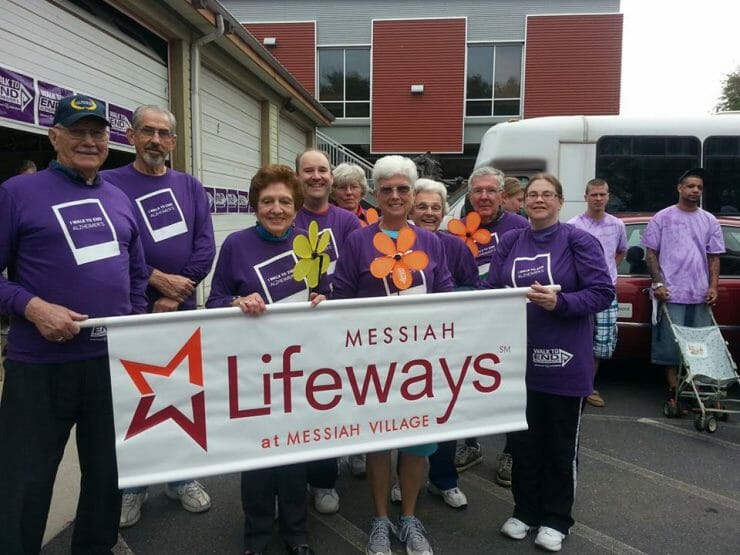As the end of September quickly approaches, so too does World Alzheimer’s Month (WAM)®, but then National Alzheimer’s Disease and Awareness Month (NADAM) and Family Caregivers Month® kicks off in November. Organizations like the Alzheimer’s Association help raise understanding and awareness throughout the year, but have carved a special niche in the fall with the awareness months and large national fundraisers like the Walk to End Alzheimer’s (see photo below). Therefore, it’s a good time to continue the discussion and to learn more.
Though the average person generally understands that Alzheimer’s is a disease or affliction to the brain that affects things like memory, behavior, and cognition, some of the more specific details get muddled. To better understand Alzheimer’s it’s helpful to explore what it is and what it is not.
One of the most common misconceptions is that dementia and Alzheimer’s disease are one and the same, completely synonymous interchangeable terms. However, dementia is actually the broad descriptor and overall term that describes a range of symptoms linked with a decline in memory and other cognitive skills. This can also include: losing one’s ability to reason, communicate, and focus; produce aggressive or difficult behaviors; and/or reduce a person’s ability to perform everyday tasks like bathing or dressing. So if a person has dementia, it does not necessarily mean they have been diagnosed with Alzheimer’s. Alzheimer’s disease is just one of approximately 50 known causes of dementia. A few other types of dementia include: (click on each for detail)
•Vascular Dementia
•Dementia with Lewy Bodies
•Parkinson’s Disease Dementia
•Frontotemporal Dementia
•Creutzfeldt-Jacob Dementia
•Huntington’s Disease
But many of these other types are less common whereas according to the Alzheimer’s Association, Alzheimer’s represents approximately 60-80% of all dementia cases. Therefore it garners most of the attention and research when it comes to these types of degenerative neurological diseases.
While some forms or causes of dementia are reversible, such as thyroid problems, urinary tract infections and vitamin deficiencies, Alzheimer’s is not. It worsens over time and has no current cure and is fatal as it eventually shuts down the ability for the brain to communicate with vital organs. But treatments are available to battle the symptoms. Drugs like Namenda® and Aricept® slow the progression of memory loss, antidepressants help with mood, and anxiolytics help reduce anxiety and restlessness.
There is no single test to diagnose Alzheimer’s. While physicians can usually determine if someone has dementia, it may be harder to determine the exact cause. Diagnosing Alzheimer’s involves mental status testing, a comprehensive review of their medical history, neurological exams, plus blood work and diagnostic brain scans to help rule out other causes.
There is so much to learn about dementia, and websites like alz.org provide a great resource to gain knowledge and understanding of Alzheimer’s as well as other forms of dementia. But it also serves as a great place to turn for those dealing with issues like early onset dementia, caregiver burnout and other care issues. It also provides helpful facts and figures, 10 signs to look for, an overview of the stages, risk factors, treatments, and even covers myths about the disease, plus much more.
Additionally, other resources like the Alzheimer’s Foundation of America will be offering National Memory Screening Day on Tuesday, November 19 at various locations throughout the state at no cost.





